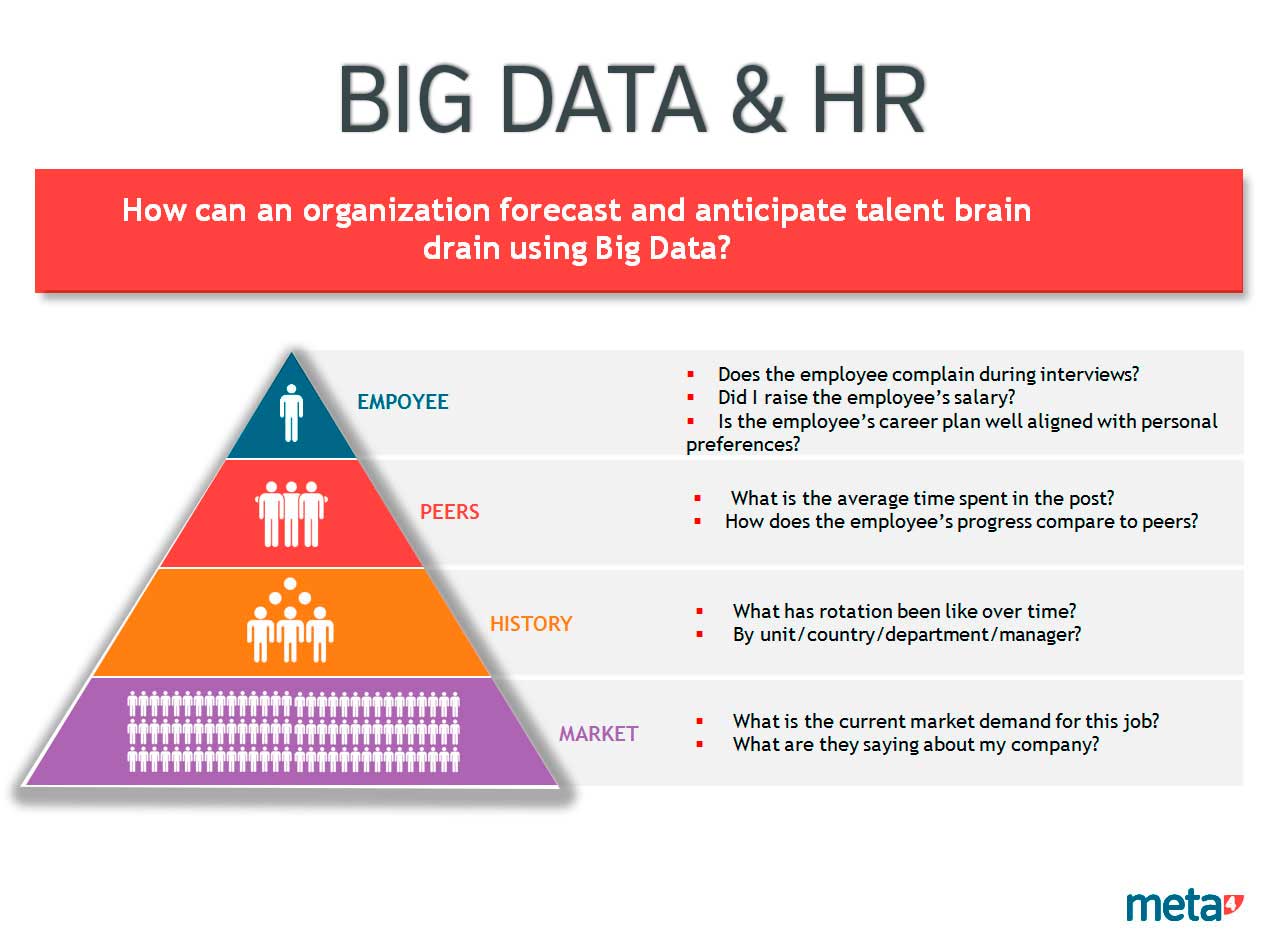If there is a technology revolution that is profoundly impacting the way we analyze and understand various aspects of society and business, the chances are that this is the Big Data revolution. A global study by Accenture shows that for 89% of decision makers in companies, Big Data will be a revolution that is at least as important as the Internet one.
What’s the deal with Big Data? Some views
Big Data allows us to understand reality more accurately, maybe. Marc Buckingham, recently in an article for the Harvard Business Review titled “Most HR Data is Bad Data” spoke of the need to seek new sources of data analysis, as most HR information we have so far is based on personal perceptions and therefore, to some extent inaccurate. Big Data may provide the answers to address this need, as it can offer a surprising degree of accuracy in measurements and the possibilities are still yet to be explored. Within the HR field, one of the branches of Big Data that is undergoing further development and which we will discuss in this article is employee retention.
The term as we have said several times before refers to the storage and analysis of large volumes of data. However, the right conditions for data to become Big Data usually involve the following factors:
- A large volume of data
- Highly evolving data
- Data is dispersed and presented in different formats
- Data is accurate
Big Data applied to HR has enormous potential. Right now in the market we’re seeing greater development in recruitment, performance appraisal and employee retention. In this article we will just focus on the last one.
Employee retention and Big Data: a merger with a future
Employee retention is one of the major concerns among CEOs and HR professionals worldwide. The latest Gallup index on employee engagement reveals that only 13% of workers at the global level are engaged, a worrying figure for organizations worldwide. The global index tells us that there are 63% of employees who are not engaged (they do the minimum required to keep the job) and 24% who are actively not engaged (these are toxic employees within an organization). From their conclusions, this index underscores that it is possible to establish a positive relationship between engaged employees and business results, be it improvement in productivity, increased dividend for investors, lower labour accidents and reduced absenteeism due to illness, and more. Clearly there is a worldwide employee engagement crisis. That is why organizations are deploying all kinds of engagement strategies to prevent the talent brain drain, often with the help of specialist consultants. The market is complicated and the ability to recruit and retain specific profiles in short supply creates the competitive gap between businesses today.
In this context, Big Data is increasingly positioning as a great ally in our employee retention strategy. So the key question is: can we forecast and anticipate this talent brain drain through data analysis? The answer is increasingly, yes we can.
Employee retention and Big Data: what are we going to analyze?
It is important be clear that this has to do with a strategy for intelligent data analysis, so the data we are going to analyze must be the right set. Therefore it is highly recommended to have technology in place for managing our HR that is based on a Core HR, where there is a single record for each person in the system. Thus all the tasks we perform will feed this single record and all the information on each person in our ecosystem will always be the same, it will be unified, and it allow us to work without information duplication and errors.
To be able to forecast the talent brain drain in our organization through Big Data, we must analyze and cross data from a large variety of indicators across the board, from the highest macro to the lowest micro levels.
There is an enormous variety of data that can be factored and analyzed, such as:
• Employee data: Did I raise the employee’s salary? Is the employee’s career plan well aligned with personal preferences? …
• Peer data: What is the average time spent in the post? How does the employee’s progress compare to peers?
• Historical data: What has rotation been like over time? By unit/country/department?
• Market data: What is the current market demand for this employee’s job? What are they saying about my company?
Drawing conclusions from data
An analysis algorithm crunches through all this data to ultimately present them in a talent matrix, where we can see the risk of leaving by department, by unit, by organizational level, and more. Additionally we can detect patterns to enable us identify populations at risk and thus suggest actions to retain these groups.
One of the most interesting points will be discovering our key people in the organization who are at risk of leaving; it is well established that high potential comes with a greater risk of leaving. We will also be able to see if there are leadership issues, lack of motivation, learning difficulties, compensation and other problems and this way develop a talent management strategy accordingly.
In short, Big Data applied to employee retention has great possibilities, each organization can adapt the tool to their needs, and it will allow us to develop forecasting models to pre-empt talent brain drain which will be crucial for our retention and engagement strategies of our human capital.
—————————————————————————————————
Did you like this article? If so, you might like to explore further with other relevant articles on engagement management. We recommend the following:
Engagement… the Most Wanted Intangible
Overcome Challenges in Engaging and Recruiting Critical Skilled Talent with HR Technology







